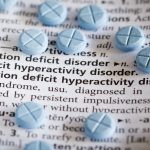
A stressful or traumatic childhood experience — anything from parents divorcing to a sibling’s drug problem — may have long-term effects on a woman’s sexual health. These adverse childhood experiences may be linked to sexual inactivity and dysfunction in women later in life, a recent study reports. Health care providers should screen their patients with sexual dysfunction for adverse childhood experiences, researchers recommend. Doctors should offer these women treatment that could include a referral for counseling. “This research adds to the literature exploring sexual function in women,” said senior author Dr. Ekta Kapoor, assistant director of the Mayo Clinic Center for Women’s Health in Rochester, Minn. “Sexual dysfunction has a significant impact on a woman’s quality of life. Based on these findings, we encourage health care providers to screen for adverse childhood experiences in women with sexual dysfunction and offer multidisciplinary treatment including referral for counseling as needed. If the consequences of childhood adversity are not adequately addressed, other interventions to improve sexual function may not be successful,” Kapoor said. The study included more than 1,500 women, aged 40 to 65, who visited the Menopause and Women’s Sexual Health Clinic at the Mayo Clinic in Minnesota between 2015 and 2016. The women had concerns related to menopause and sexual health. Before their visit, they were asked to complete a survey that included questions about any… read on > read on >


















